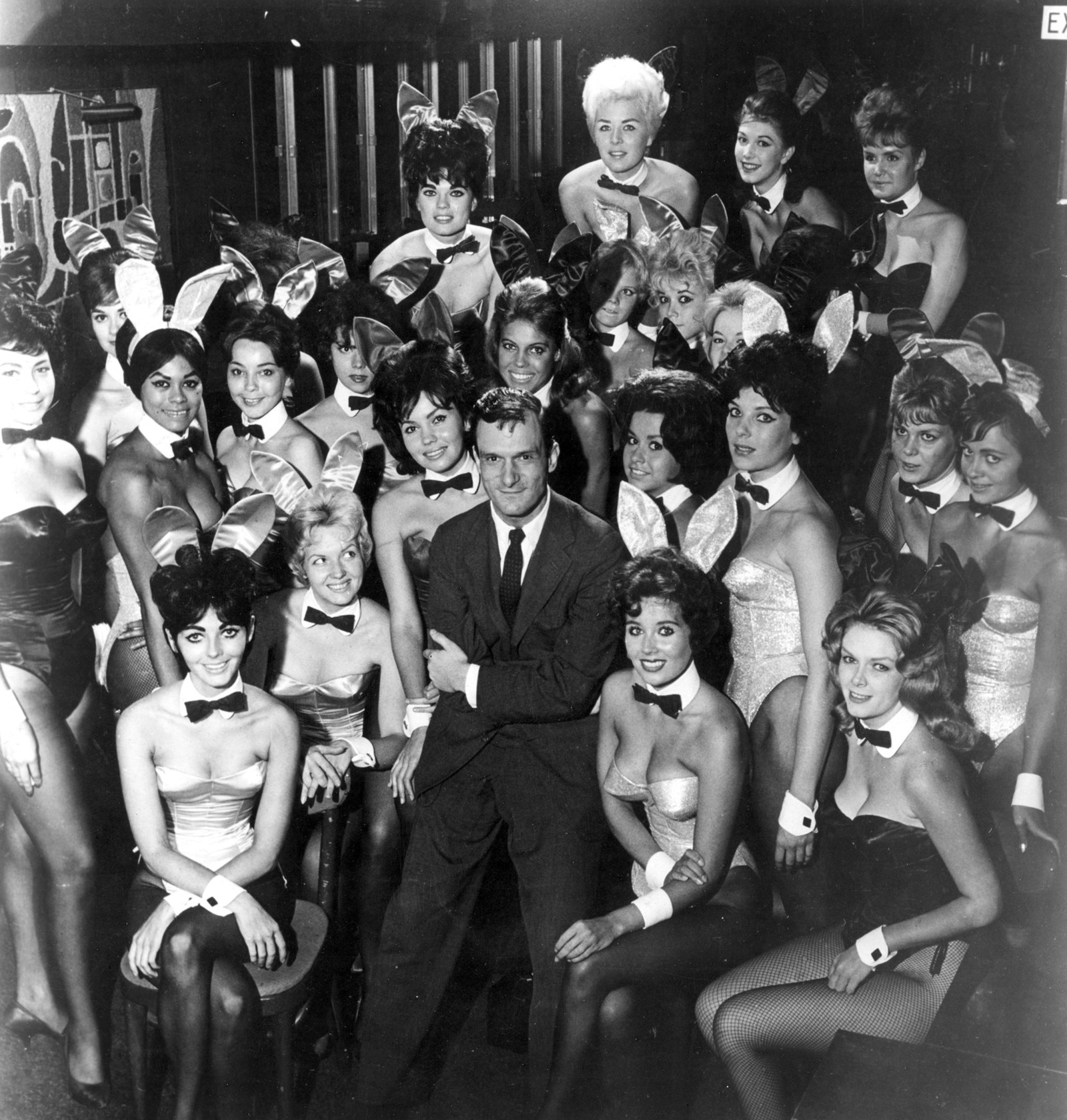For the cost of $25.99 on Amazon, you can be a Playboy Bunny this Halloween! The costume includes Polyester Bunny ears, a pink corset with snap closure and more. Maybe you’ll invite a male friend to wear a faux velvety robe and don the infamous Hugh M. Hefner sailor cap for just $44.99.
If you and your friends are opting last minute for Hefner and his bunnies, I would advise you to think twice. The costumes are emblematic of a company that profited off of women’s bodies through the disguise of “sexual liberation.”
The company’s ringleader, referred to as “Hef,” was a larger-than-life man who set out to manufacture America’s finest utopia. The operation, which aims to satisfy men’s urges, monopolizes American lives in the form of print, film and an immersive adult playground known as the Playboy Mansion.
The history of Hugh Hefner and “Playboy’s” regard for gender is oftentimes incongruous. Hefner and “Playboy” rose to prominence in a postwar 1950s “crisis of masculinity.” Although the time period heralded anti-feminist sentiment, Hugh Hefner claimed the magazine’s feminist origins by insisting that the playmates, models featured in the magazine’s centerfold, “fulfill their own needs and desires” while satisfying men.
Hefner frequently made sexist remarks inconsistent with the magazine’s public statements in support of women’s rights. Hefner’s biographer Steven Watts wrote that he asserted “no sane woman would really want equality,” yet in 1970, the company spoke in support of access to contraceptives and abortion.
“Playboy” has also been critiqued for seeking legitimation from the academic world. In refusal of being a pornographic publication, the magazine includes interviews, music focuses, philosophy highlights and life guides. The intellectual materials in the magazine at times trivialize its pornographic aspects; young boys who are unsure how to approach manhood use “Playboy” as an ideological manual. Instead of allowing a natural pattern of male growth, Hefner established a quasi-monopoly over coming of age in America.
Generations of women have pledged to unlock the secrets behind “Playboy.” Alexandra Dean, the Emmy award-winning filmmaker who directed A&E’s “Secrets of Playboy” (2022), wanted to capture the relevance and vibrancy of “Playboy” through film. During her research process, she instead discovered Hefner’s friendships with sexual predators Bill Cosby and Roman Polanksi and realized it was time for the empire’s reckoning. She redirected the show to answer the question: what is the history of “Playboy” from the women’s perspective?
The “Secrets of Playboy” series tells the story of a prominent Bunny and seven-year girlfriend of Hefner, Holly Madison. Madison was first attracted by the magazine’s allure and the prospect of making college tuition money. She confessed that Hefner kept his dynasty intact through blackmail, intimidation and assertion of power over the Bunnies.
With the history of “Playboy” in mind, wearing the Bunny costume has more significant implications than just sex appeal. The costume began as a choice for women but soon became a mental and physical prison. Corsets shaped the playmates’ bodies into hourglass form while Hefner subjugated their brains. Wearing the Bunny costume meant initiation into a cult of enchantment and trauma.
In the third episode, “The Bunnies & The Cleanup Crew,” interviewees describe the coverup of horrors that occurred in the mansion. Sondra Theodore, who referred to herself as Hefner’s drug mule and girlfriend, told a story of two new Bunnies who went missing from the “Playboy” club for three days. They had been kidnapped and sodomized by a VIP of the company. The women were never permitted to go to the hospital or call the police, even in situations of extreme danger.
“Playboy’s” logo exists on tracksuits and dorm room posters as an emblem of fame, glamor and masculine ideals. While the classic bunny stamp is relevant in today’s y2k fashion resurgence, the magazine itself has lost traction. As a last-ditch effort to save the company’s reputation and monetary value, “Playboy” is making strides toward diversity and inclusion. The attempt to turn “Playboy” into a woman-led, pleasure-focused magazine does not excuse its sexist history. While Hefner was not properly held accountable for his actions in his lifetime, stories of abuse have been given attention since his death in 2017.
The college culture of Halloween as an opportunity to look sexually attractive is deeply damaging. Boys dress up as Hugh Hefner to feel suave and macho. Girls wear Bunny costumes to display their bodies. Not only does the Bunny evoke years of abuse, but dressing as Hefner also positions men as exploitative and aggressive. While rabbit tails and sailor caps seem alluring, “Playboy” cosplay glamorizes a culture of assault and extortion.
